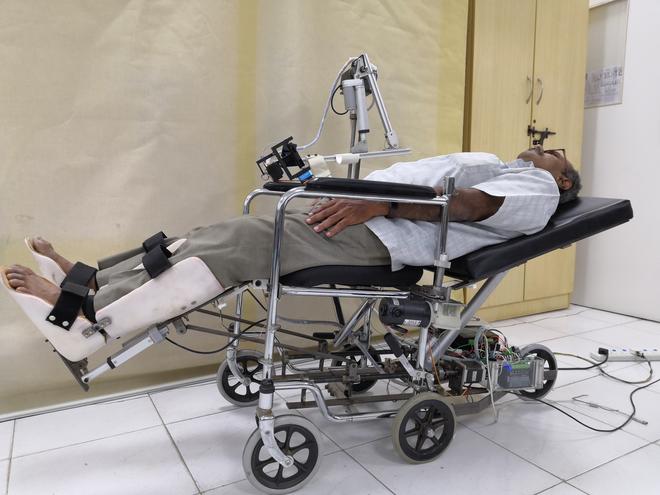The researchers at the International Institute of Information Technology Bangalore (IIITB) have developed ‘XoRehab’ an Internet of Things (IoT) enabled wheelchair device to help in the rehabilitation of stroke patients post-surgery.
The device was developed in Center for Internet of Ethical Things (CIET) at IIITB. The CIET is established in collaboration with the World Economic Forum (WEF) with support from Karnataka Innovation & Technology Society (KITS) and sponsored by IT-BT Department of Government of Karnataka.
“Post-surgery, stroke patients need to undergo a lot of physiotherapy. However, validated physiotherapists are limited in hospitals. Once patients, especially those who come from rural areas, are discharged they have to come back all the way to big hospitals to undergo physiotherapy and this becomes a logistic hurdle for patients,” Madhav Rao, Associate Professor and CIET Convener, IIITB, told The Hindu.
He continued, “One of the neurosurgeons at Nimhans suggested that we develop a portable device (for rehabilitation) that patients can take home for lease from the hospital and bring back, once they are better. Hence, we started developing this device.”

The research work has been going on for two years now and after successfully testing the device with different people with varying height of 4.8 to 5.8 feet and weight up to 75kg, the study was recently published in IEEE Xplore.
The XoRehab is an exoskeleton for rehabilitation with nine Degree of Freedom (DoF), which essentially means the allowed joint movement in upper and lower limb. “This is a home-based rehabilitation device, and it is not necessary to shift a person from one device to another between upper and lower limb rehabilitation. It involves the development of well-trained robots on electromechanical actuation,” the researchers said.
While physiotherapy is mostly mechanical and requires constant supervision from the caretaker to check if the patients are doing it the right way, the XoRehab eliminates the need for it due to its IoT enabled system.
“The existing devices in the market are specific to one area, but we have combined upper limb, lower limb and backrest mechanism in the hip that transforms the wheelchair into a stretcher, with IoT. This device will also transmit data from patients to the cloud which can be accessed by doctors/physiotherapists to check the patient’s performance log. Based on that, they can give prescriptions and suggestions about how speed or angle can be changed or improved. The device will capture these suggestions and perform the same movements,” said Jagan P., Project Staff, CIET, IIITB.
The device is also enabled with Surface Electromyography (EMG) which fetches the muscle behaviour of the patient and helps in the analysis of muscle recovery. “We have constructed the device using DC motors and it is completely safe,” Mr. Jagan added. The device also has an emergency kill switch to stop rehabilitation.
One of the main objectives of the researchers was to make this device as cost friendly as possible. As of now, the procurement of this device will cost around ₹85,000 to ₹90,000 for the hospitals. “They can then lease it to the patients at reasonable rates,” they said.







